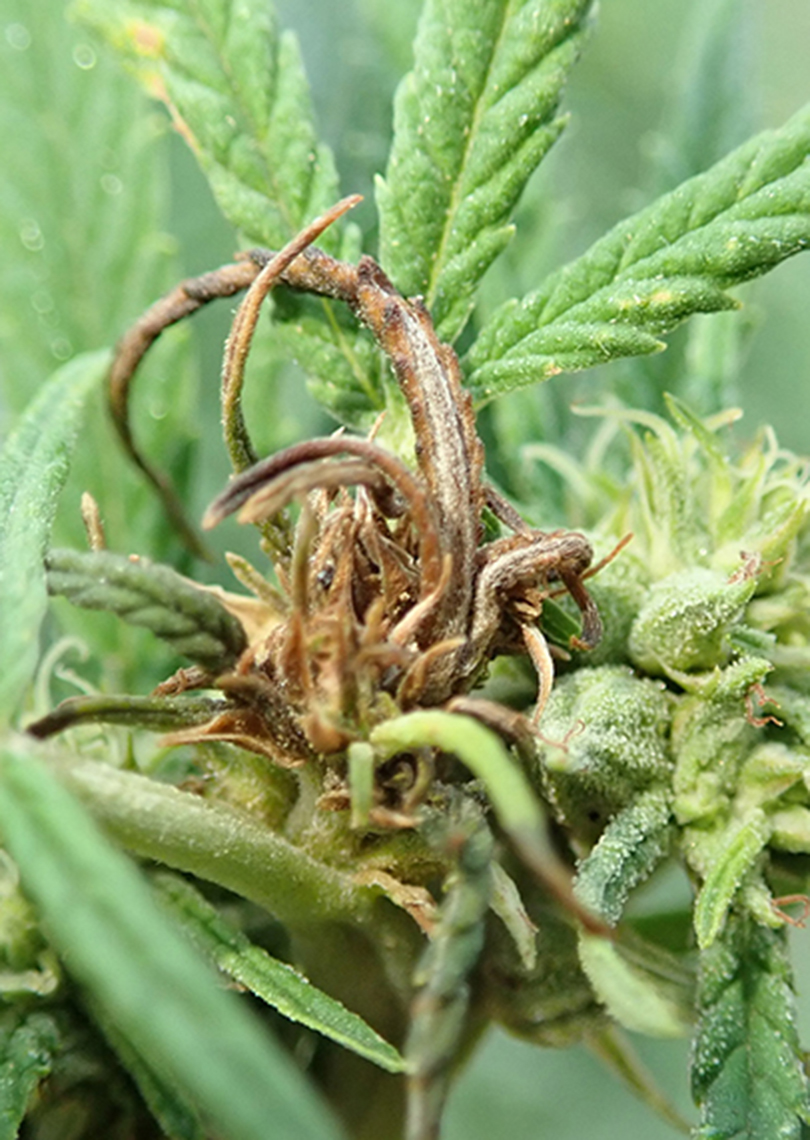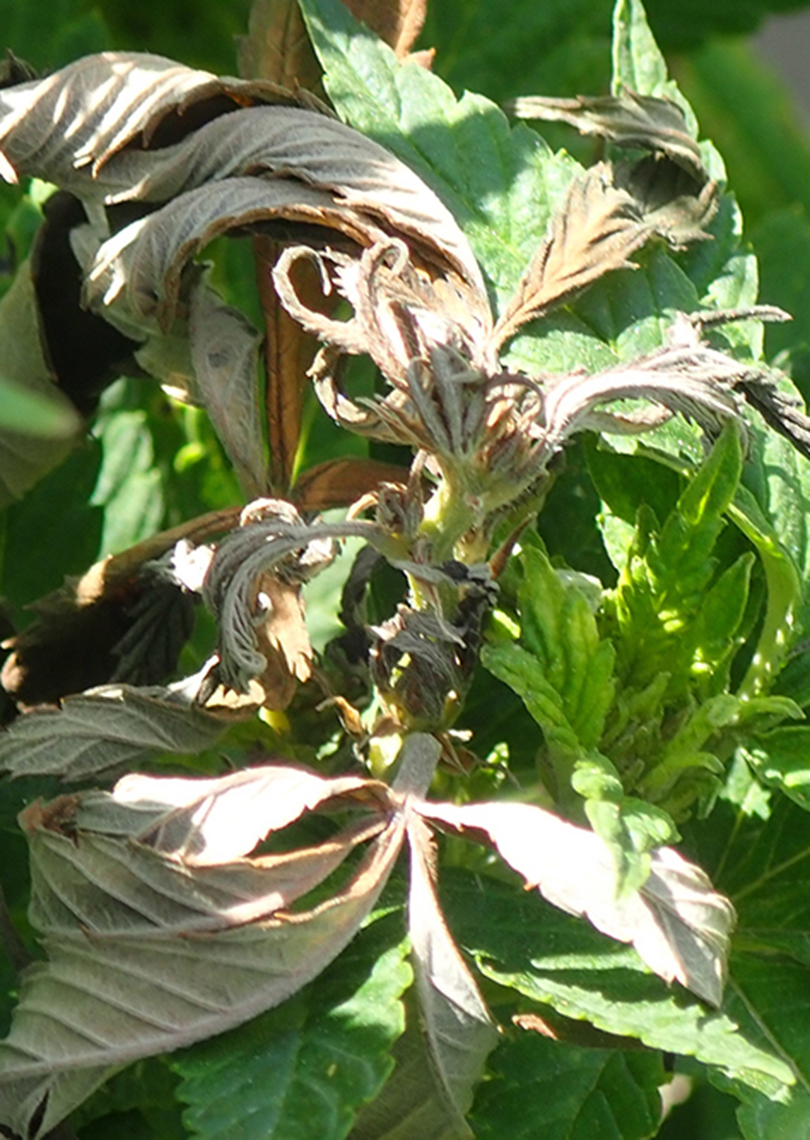Eurasian Hemp Borer
Grapholita delineana
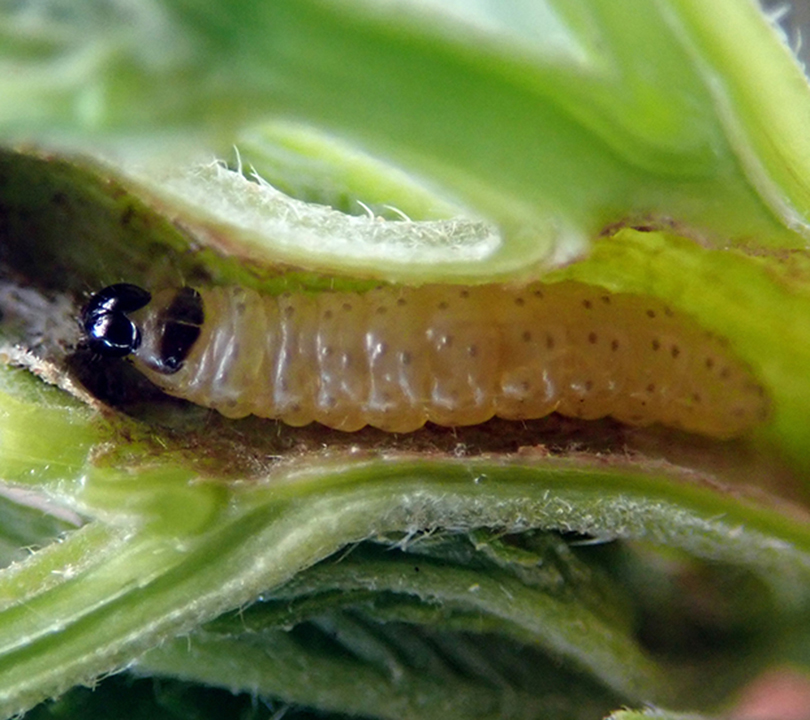 Eurasian hemp borer larva in hemp stem.
Eurasian hemp borer larva in hemp stem.
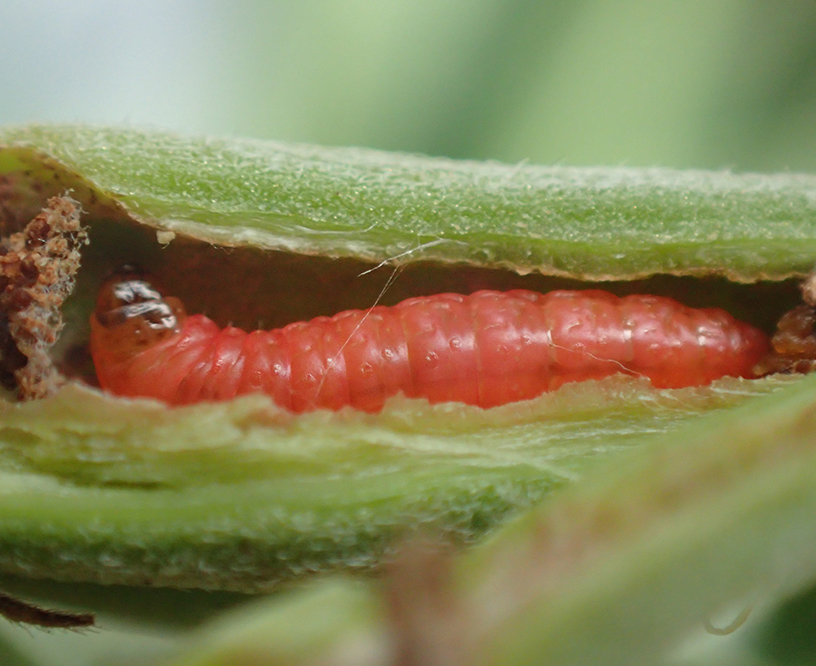
Late-stage Eurasian hemp borer larva in hemp stem.
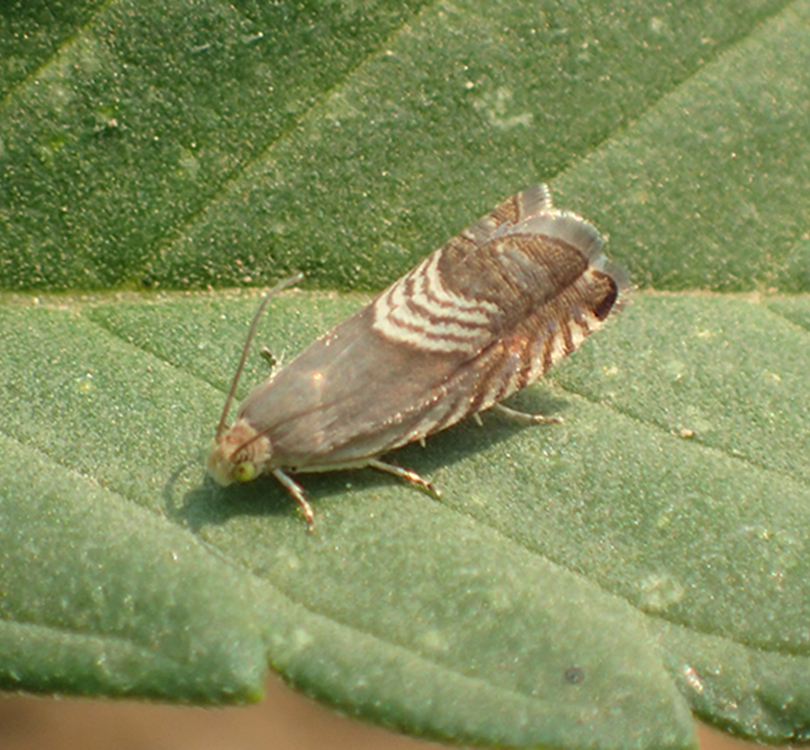 Eurasian hemp borer adult moth.
Eurasian hemp borer adult moth.
Hosts
- Field-grown hemp
- Hops
- Knotweed
- Various weeds in the family Polygonaceae (buckwheat family)
Description
Larvae range in color from creamy-white with a dark head when young to reddish-orange when mature. Adult moths hold their wings tent-like over their back. They are dull, brownish-gray with white lines on the wings.
Life Cycle
Egg | Larva | Pupa | Adult
- 2 to 3 generations per growing season.
- Overwinter as caterpillars within the stems and folds of leaves and pupate in spring.
- Adults emerge in mid-spring, mate, and lay eggs on the host plant.
- Larvae feed on the leaf surface and then bore into the stem where they will remain until they pupate and emerge as adults.
Damaging Lifestage(s): Larva
Damage Symptoms
Larvae bore into the stems and buds of hemp. Stem damage includes wilting or dieback and slight stalk swelling. Primary damage is most noticeable in mid-to-late summer when larvae tunnel into developing flower buds and stems. Affected plants will have stunted growth, split stems, dieback, and may die. Developing seeds can also be damaged.
Time for Concern
Spring through harvest.
When and Where to Scout
- Look for larvae on leaves in midspring, mid-summer, and late summer.
- Inspect stems for areas of swelling and frass (excrement) where larvae have entered the stem.
- At harvest, inspect buds and stems for larvae.
Threat Level
Medium if established
Occurrence in Utah
This pest has only been identified east of the Rocky Mountains and is not known to occur in Utah.
Management
- Reduce overwintering larvae by removing crop debris, including stems and stalks.
- Keep the field weed-free, especially weeds in the buckwheat family.
When to Consider Treatment
If needed, an approved insecticide application must coincide with egg hatch to kill larvae before they bore into the stem.
Look-alikes
European corn borer, corn earworm.
Caterpillar Insecticides
| Utah-Registered Product | Active Ingredient(s) | Notes |
|---|---|---|
| Agree WG | Bacillus thuringiensis ssp. aizawa | |
| Aza-Direct Biological Insecticide | azadirachtin | |
| AzaGuard | azadirachtin | |
| AzaSol | azadirachtin | |
| Azatin O Biological Insecticide | azadirachtin | |
| Azatrol EC Insecticide | azadirachtin | |
| Azera Insecticide | azadirachtin | |
| BT Now | Bacillus thuringiensis ssp. kurstaki | Greenhouse use only. |
| Bug Buster-O Extinguish Ant Bait | pyrethrins | Greenhouse use only. |
| Deadzone | diatomaceous earth | |
| Deliver Biological Insecticide | Bacillus thuringiensis ssp. kurstaki | |
| DiPel DF Biological Insecticide | Bacillus thuringiensis ssp. kurstaki | |
| DiPel DF Biological Insecticide Dry Flowable |
Bacillus thuringiensis ssp. kurstaki | |
| DiPel PRO DF Biological Insecticide | Bacillus thuringiensis ssp. kurstaki | |
| Evergreen Crop Protection EC 60-6 | pyrethrins | |
| Ferti-Lome Dipel Dust Biological Insecticide (RTU) | Bacillus thuringiensis ssp. kurstaki | |
| Ferti-lome Fruit Tree Spray | pyrethrins | |
| Grandevo CG;WDG | Chromobacterium sub strain PRAA4-1 cells | |
| Javelin WG Biological Insecticide | Bacillus thuringiensis ssp. kurstaki | |
| Leprotec | Bacillus thuringiensis ssp. kurstaki | |
| Molt-X | azadirachtin | |
| Neemix 4.5 Insect Growth Regulator | azadirachtin | |
| Prizefighter | ammonium nonanoate | |
| Pycana | pyrethrins | Greenhouse use only. |
| Pyganic Crop Protection EC 1.4 II; 5.0 II | pyrethrins | |
| SPEAR-LEP | gs-omega/kappahxtx-hv1a | Supression only; combine with a Bt product for greater efficacy. |
| Tersus Insecticide | pyrethrins | |
| Thuricide N/G | Bacillus thuringiensis ssp. kurstaki | |
| Valent Professional Products DiPel Pro DF Biological Insecticide Dry Flowable |
Bacillus thuringiensis ssp. kurstaki | |
| Venerate CG | Burkholderia sp. strain A396 | |
| XenTari Biological Insecticide Dry Flowable | Bacillus thuringiensis ssp. aizawai |
Photo Credits
- Whitney Cranshaw, Colorado State University, Bugwood.org


